The Webley Axsor was Webley’s first PCP, but does it still a make a viable option for airgunners? Pete Evans reviews...
Most people will be aware that Webley’s first PCP had more in common with ABBA than it did with the Birmingham factory where the remainder of the Webley guns were made. Webley needed to make an impact on the airgun scene for their first PCP, and in some ways it might have been seen as a bit of gamble to employ the services of a little known gunmaker, at the time. It was certainly a gamble that paid off, though, giving a double win, both for Webley and Fredrik Axelsson, who went on to be a household name as the genius behind FX Airguns.
 credit: Archant
credit: Archant
In the beginning
By the time Fredrik hit his early twenties, he was already making airguns of his own. His initial enthusiasm was stoked by disappointment with air rifles that were around at the time, and so he started with gas-ram-powered guns, followed by multi-stroke pneumatics. Scuba diving wasn’t a particularly popular sport in Sweden, so it was necessary for him to develop a hand pump to charge his early PCP designs and ironically, it seems that it was these pumps that first grabbed the public’s attention. The pumps were also named ‘Axsor’, resulting from the ‘Ax’ of Axelsson and ‘Sor’ from Sorder, the surname of the person running the company that made the original prototypes.
Good news travels fast, and so it was that Fredrik travelled to the UK to meet with the trinity; Nick Jenkinson – field target supremo; John Ford – the maker of the GC2 pneumatic rifle; and Terry Doe –introduction unnecessary. Undoubtedly spurred on by these influential figures, and their satisfaction in his designs, he took Webley’s eye, and went on to build several models for them over the next few years.
The Axsor rifle saw a three-year production run from 1997-2000, producing a firm foundation for Webley to develop their own models in the form of the Raider, which remains in production.
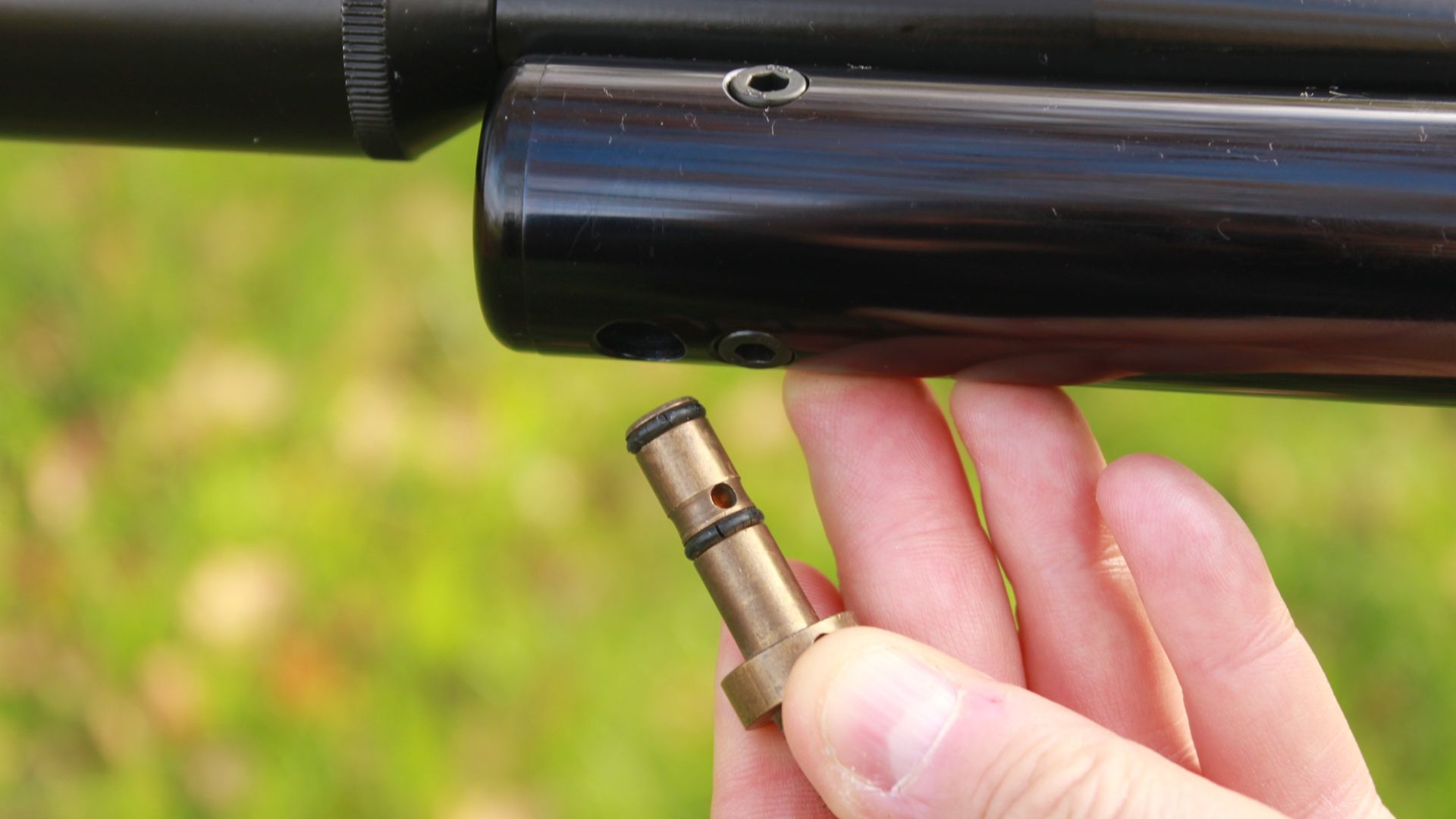 credit: Archant
credit: Archant
Second-hand market
So the question remains; does an Axsor make a viable second-hand purchase, particularly given the plethora of modern PCPs available?
To help answer this question, consider my own gun, which I bought recently from Neath Gun Shop for £160. Not a huge sum, but as you have already deduced, the gun is not without a few problems. This gun is an example of one bought ‘as is’, with all faults, and obviously without warranty. Buying like this will always be a gamble, so in such instances, I normally do a quick mental calculation on what the gun might be worth as spares. This takes note of the condition of those spares visible, of course. So, join me on a walk-through, which will serve as an introduction to the Axsor, whilst giving an opportunity to highlight some of the problems I have spotted.
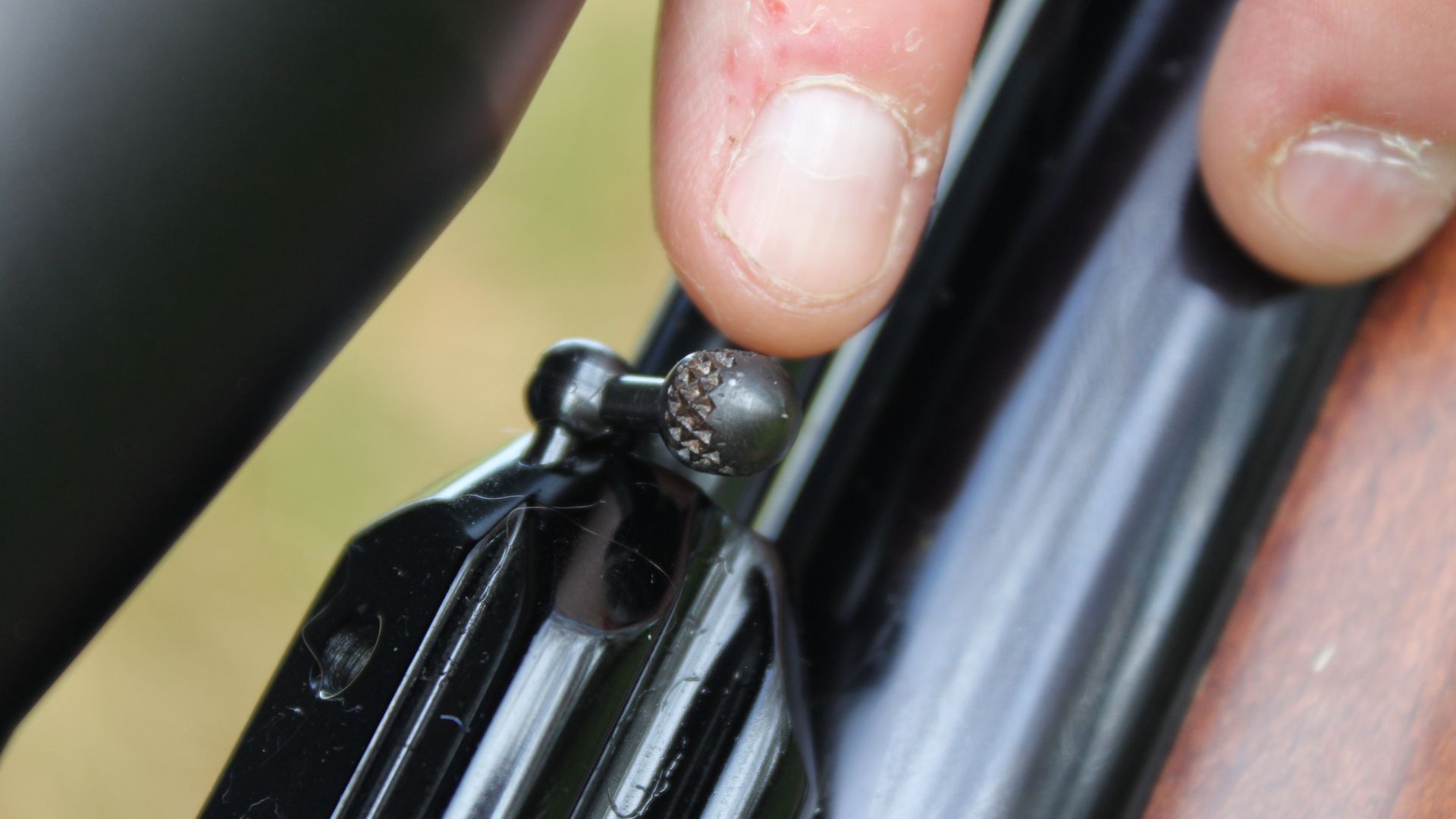 credit: Archant
credit: Archant
Axsor assessment
Starting at the muzzle: Axsors came with a streamlined muzzle cap, which had the dual purpose of securing the Lothar Walther barrel, and producing an internal thread to take a Webley-specific moderator. This moderator, rather than being concentric to the barrel, actually hung under the barrel, in a similar way to the early Theoben Rapid 7s.
Using a M10 male thread, this arrangement developed a reputation for unreliability, with a tendency for pellets to clip the moderator as the whole assembly became loose. Some variations on this theme became available over the years, the most popular being an M10 insert, stepping up to ½”, so that a standard moderator could be used.
My own gun goes one better; it has one of the Webley Venom Custom Shop muzzle caps, which has a ½” removable threaded insert. I wasn’t entirely sure of what I had, but a quick call to Steve Pope confirmed that this was indeed of their creation. During the conversation, he mentioned that he had one new original Venom muzzle brake in the workshop. It seems that there were very few of these made, but even so, he was willing to sell it to me. Sadly, he passed away very soon after this, so I will never have the opportunity to show it to him fitted to the gun.
Fitted to the muzzle of my own gun is Webley BBMF moderator, the longer 8.5” version, as opposed to the 4.5” compact one. These are substantial moderators, again dating from around the same time as the Webley Venom Custom Shop, and herein lies the first problem – it’s stuck solidly in position, no amount of heavy hand pressure being able to budge it.
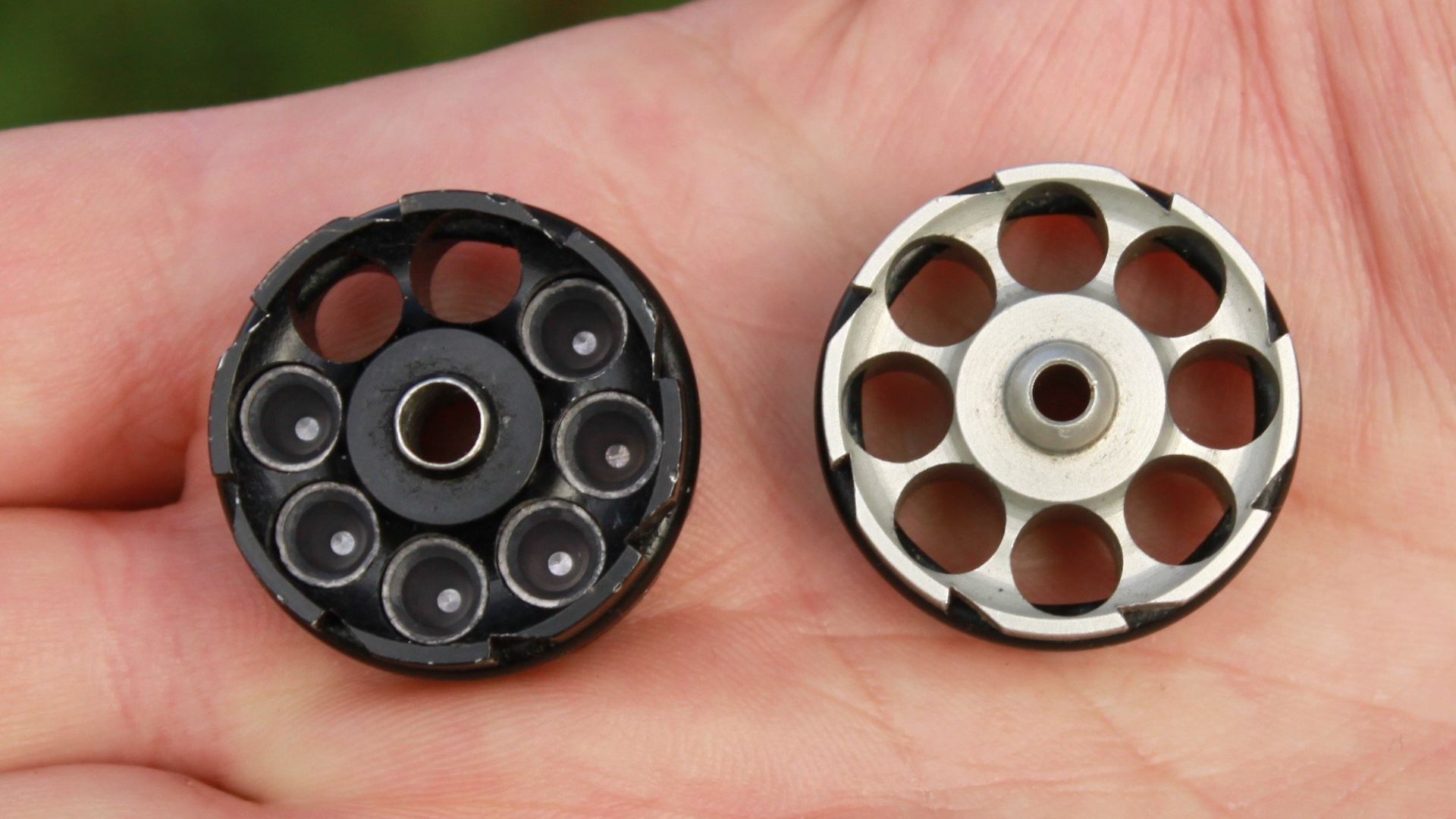 credit: Archant
credit: Archant
Magazine fed
At the end of the 22” barrel is the sculptured, low-profile breech, with an interrupted rail measuring 6” in length. Housed within the breech is the 8-shot rotary magazine, held in place by a small pin which simply slides fore and aft.
Indexed by the gun, these magazines are a simple one-piece design, and are specific to the Axsor, although they do look identical to those used on the later FX2000. The difference between the two is the diameter of the central hole, which on the Axsor is 3mm, and 4.1mm on the later models. These original magazines are not currently available to buy new, so it’s just as well that there were two supplied with the gun.
Cocking is effected by a side bolt, which moves the hammer assembly back and engages the back of the hammer with the trigger. On the forward stroke, the hammer spring is tensioned and the pellet is pushed into the breech. This means the bolt is easy to pull back, with more effort needed to complete the forward stroke. This may be marked as the next problem because the forward stoke took more effort than should be necessary for this gun, although it was smooth with nothing dragging or grinding. For me, this could spell one thing – someone had replaced the hammer spring with a heavier one in a bid to wring more power from the gun.
In a situation like this, I tend to think laterally and wonder what else might have been adjusted (read ‘destroyed’) in the pursuit of power. Knowing that the transfer port is not adjustable on this gun, as it is on the FX2000, made me wonder if this also might have been enlarged. Only time will tell if this is the case – well, next month, in fact!
 credit: Archant
credit: Archant
Heavy cylinder
The under-barrel cylinder runs the complete length of the barrel and breech, 33mm in diameter, and although you can’t see it at this point, 5mm thick. This means that it is not only strong, but also capacious, and with the long barrel it means that around 80 shots are possible on a 190-bar charge. These figures relate to the full-length gun as available at the launch; a carbine version became available in time, which took the barrel length down to 17”.
Charging the cylinder is fuss-free due to the plug-in-style connector, although a plug to keep the charging port clean wouldn’t go amiss – these are available from several after-market sources. The subject of charging brings me neatly to the third and final known problem – the gun has a leak.
‘Has a leak’ is probably a mild description because the gun seems to haemorrhaging air from every available opening. There’s no need to run diagnostics on any single part – this gun needs a full reseal.
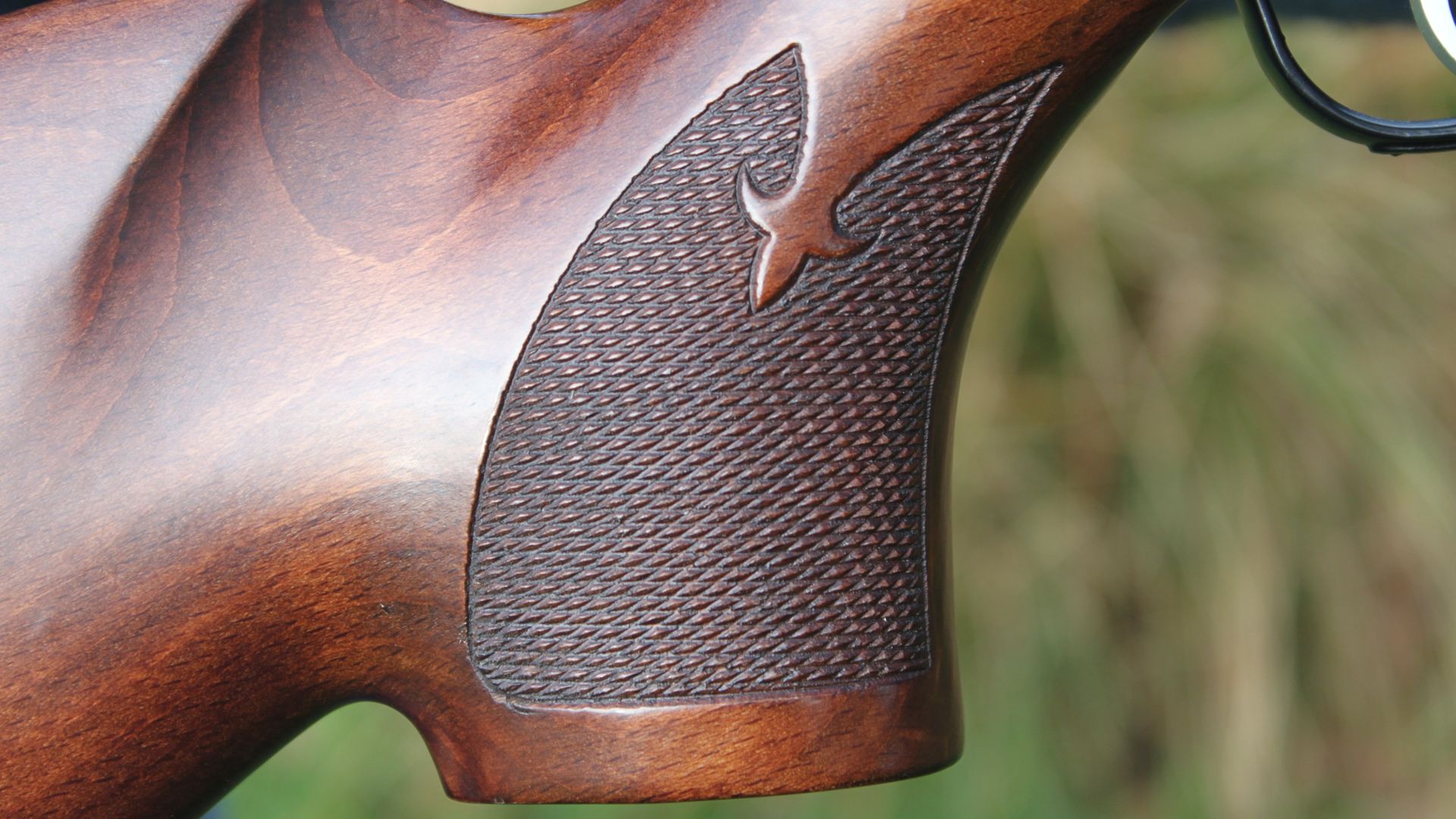 credit: Archant
credit: Archant
Adjustable trigger
Despite the fact that this trigger removes from the gun in one piece, as we will see next month, and looks simplistic in design, it does offer adjustments to first-stage, sear engagement, and second-stage weight. In practice it does a very good job, offering a crisp let off, with sensible pull weight. I’m not sure if this has been adjusted as per other parts on this gun, but if so, it has been done sensibly – and importantly, it does actually work!
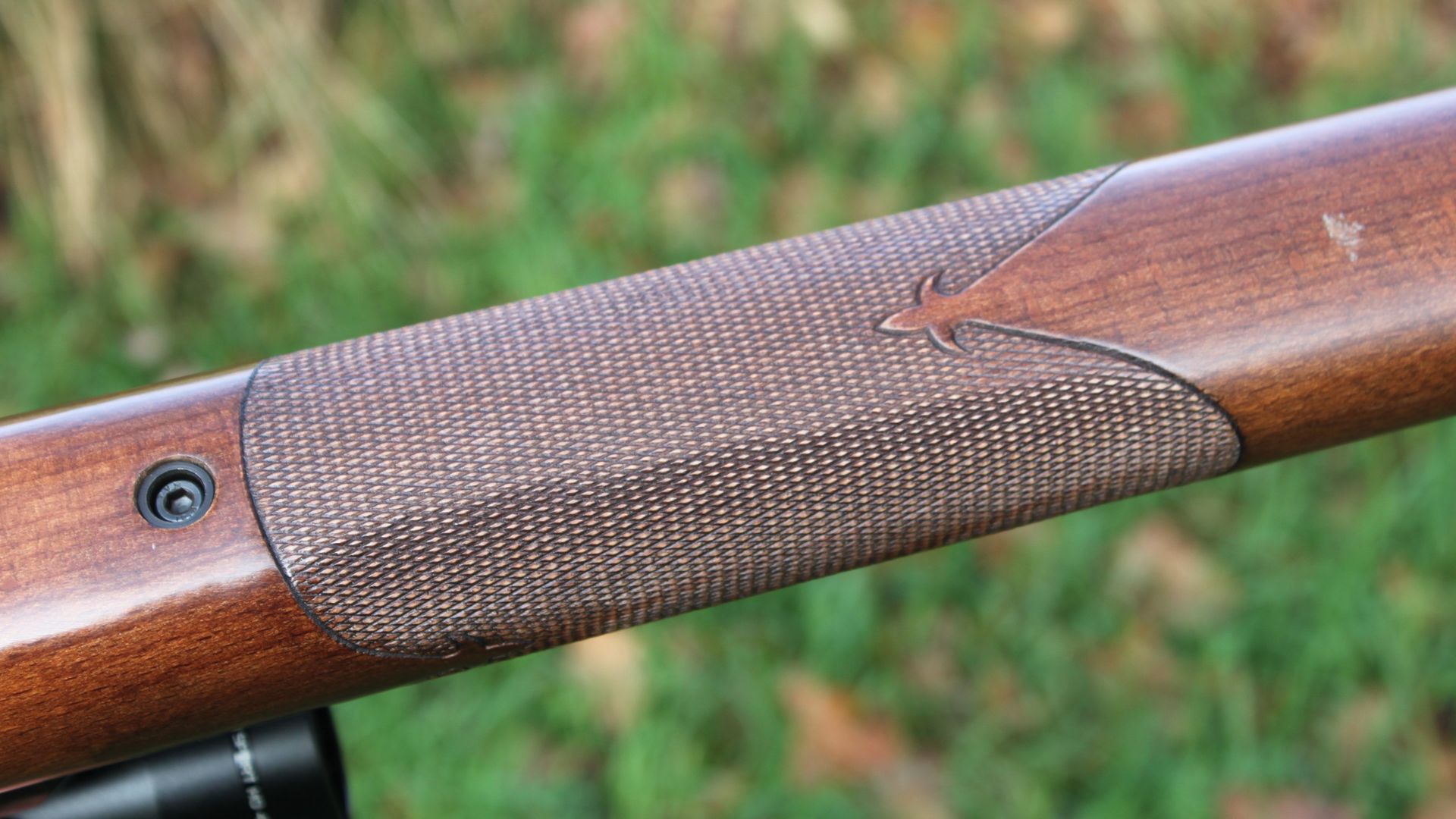 credit: Archant
credit: Archant
Woodwork
Initially available in beech, soon followed by walnut, the Axsor stocks were designed along the lines of the classic sporter, with the added twist of a beaver-tail profile fore end. Undoubtedly, this adds a little forward weight, which helps stability and allows the fore end to sit nicely on the palm.
Embellished with fleur-de-lys chequering on the fore end and grip, it’s a design feature that not only looks attractive, but it also serves the useful purpose of maintaining traction.
The beech stock on my own gun is in very good condition, save for a couple of marks – nothing that would point toward it having a rough life in the field. With an overall length of 39.5” and a weight of around 6lbs unscoped, the Axsor isn’t too difficult to move about with, although I would advise care in moderator choice. A long moderator, as I have at the moment, allows the gun to double as a drey poking stick, which is certainly not conducive to shooting from a hide. All these Swedish-derived Webleys have impeccable styling, with a quality of finish to match. Given routine care and attention, they are a gun that will be with you for the long haul.
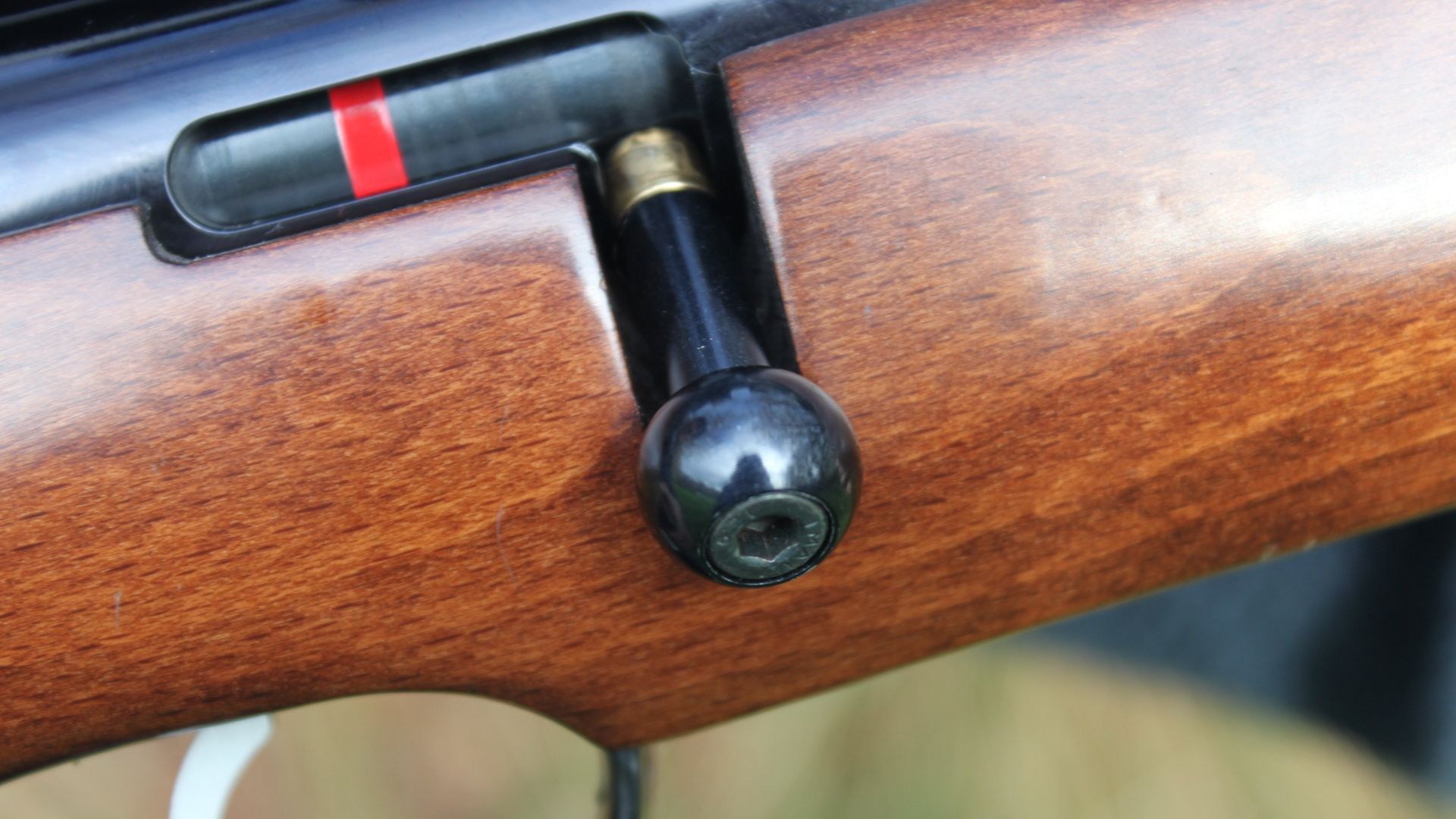 credit: Archant
credit: Archant
Performance
Usually at this point, I would make some comment on the rifle’s performance, perhaps something about shot count, variation, and maybe some sample group sizes. Alas, this is impossible given the rifles’s current state of repair, but I am confident that it can be brought to working order without too much outlay.